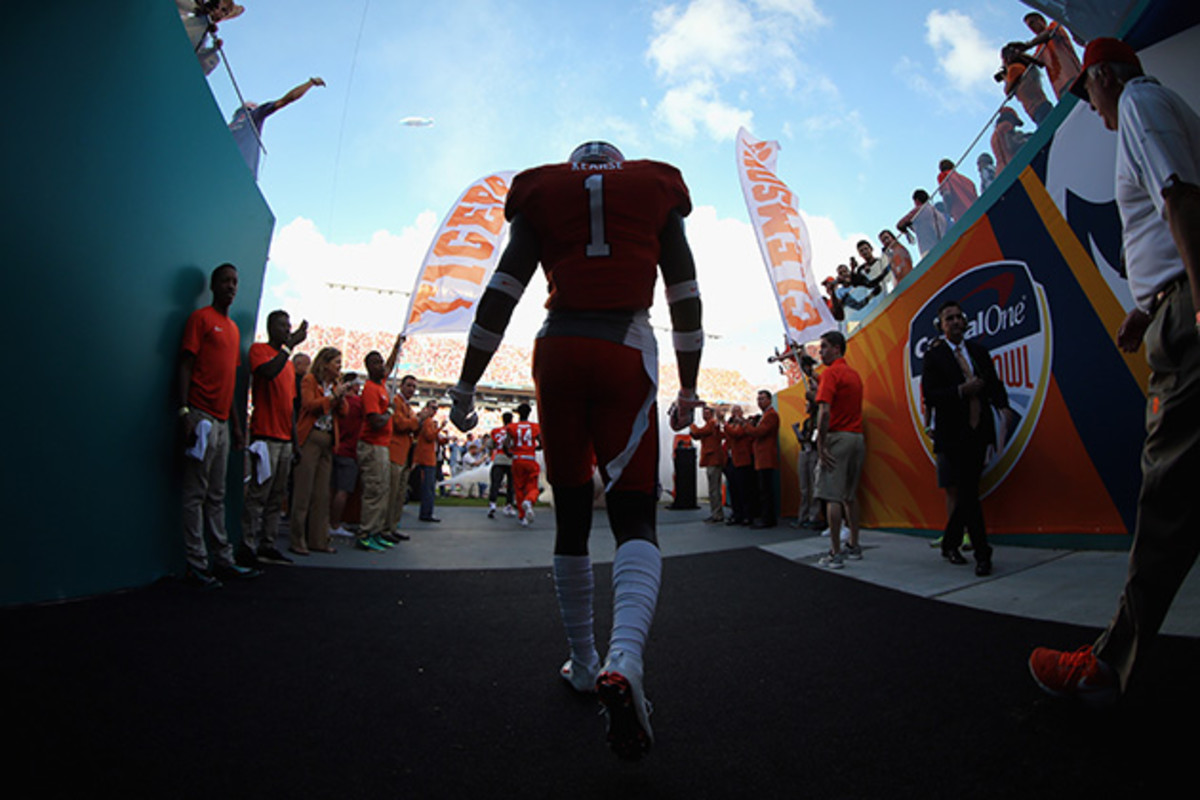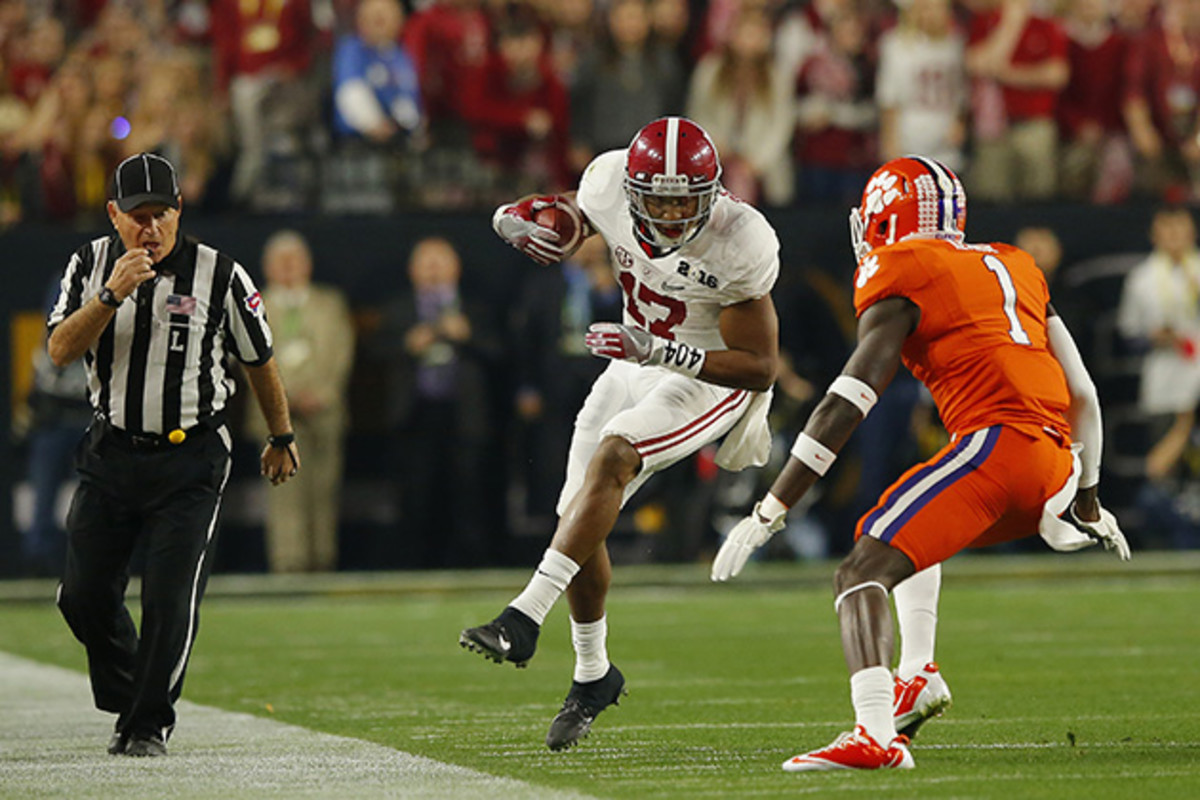Training with Jayron Kearse: Clemson safety takes workouts to the beach

This spring, Clemson safety Jayron Kearse returned to South Florida near his hometown of Fort Myers and hit the beach—not for a relaxing day in the sun but for a series of workouts he hopes will help land him a spot on an NFL roster. After the NFL Combine in late February, Kearse shifted his training from 40-yard dash and agility drills to more position-specific sessions, many at the shoreline.
“We do the same cuts we do on the turf and do them in the sand,” says Derek Touchette, Kearse’s trainer at Total Athletic Performance in Naples, Fla. “Zigzag drills, footwork, drills where he has to circle the cones, back pedal and break off into 45-degree sprints. Same thing he would do if he was actually on the field playing the game.”
While he performed track-and-field drills ahead of the Combine, Kearse now focuses most of his time during a session on running backwards and opening his hips, two critical skills at the cornerback/safety position.
Training with Shaq Lawson: Clemson DE's keys are hips and hands
“Playing my position you have to be able to turn and run and do it with efficiency because we are running backwards 90% of the time,” says the 6'4", 210-pound Kearse. “We do a lot of opening up drills to make sure my hips are flexible, box jumps to work on explosion, things like that.”
Because players at the safety position need to be able to turn left or right extremely quickly out of a backpedal, Touchette adds in various yoga stretches and myofascial release (massages to relieve muscle tightness) using a foam roller technique to keep the glutes and hip flexors loose. Other exercises that target the “glute-complex area” include single leg squats and monster walks—short steps forward, backwards and laterally at different angles using a resistance band around the ankles. Kearse also says he never forgets to incorporate stretching into his routine. “With the way we’re training, our bodies tend to get stiff very quickly, so we roll out our muscles and make sure right after the workout we’re not just sitting around,” he says.
In the gym, workouts are split between upper and lower body, and the aim is not to build a lot of muscle mass or get “too big” but to be explosive with every movement. Instead of traditional squats, Kearse does box squats, in which he sits down on the box, explodes up and brings his hips all the way through, standing straight back. Touchette also trains speed and quickness using any tool that can apply external resistance to Kearse’s body.
“Sleds, the prowler, different speed resistance belts—something I can use to manually resist him but still be able to rip the belt off and let him go free at full speed,” says Touchette. “The goal is to trick the body to be able to move as fast as it can when the time is called upon.”

Kearse says he also works on catching during a session—sometimes using the jug machine to snatch at least 50 footballs like a wide receiver, but most of the time it’s with a special exercise created by Touchette. “We do a lot of things with tennis balls,” Kearse says.
“I take a Sharpie and put different numbers on the ball, so when we’re playing catch, he has to locate the number and hand-eye coordination has to be extremely high,” Touchette says. “We do that at different angles or on a Bosu ball to create some stability in the reaction drill.”

Since the Combine and ahead of the NFL Draft in late April, Kearse visited and practiced with several teams, including the Pittsburgh Steelers, Carolina Panthers and more, and the 22-year-old says he has already learned areas in which he can improve.
“[The Panthers DB coach] definitely showed me some things I could do to get better before I take that next step,” Kearse says. “I was bending more at the waist to get low and he told me to bend from the knee instead, so I’m in a great position to play man-to-man, zone, or bump and run if I need to do that.”
• MORE EDGE: The link between genetic testing and NFL talent ID
Kearse says that he tries to emulate current NFL players such as Tyrann Mathieu, Harrison Smith and Reshad Jones, and hopes to enter the league playing at an elevated level.
“My goal is to continue to perfect my craft so when I do get the opportunity I can go out there and seize the moment,” he says. “Just be better than I was yesterday.”
Learn to backpedal like a pro
While wide receivers and running backs typically move forward and away from the quarterback, defensive backs often run backwards during a game. Below, Touchette shares his tips for an efficient backpedal.

Keep core strong
A lot of your motion in the backpedal comes from having a good center of gravity and a strong core complex, or the 360-degree area from the bottom of the rib cage to the middle of the leg. Engage the entire area, including the upper hamstring, glutes, abs and stabilizers.
Stay on your toes
Don’t get caught on your heels. Remain on the ball of the foot so you can turn and break out into a forward sprint if needed.
Relax the arms
In the backpedal stance, keep arms in a loose, 90-degree position. Elbows should be right in line with your hipbones as you swing back and forth.
